Cape Henlopen State Park
- January 30, 2024
- 0 comment
Explore Cape Henlopen State Park’s stunning beaches, scenic trails, and rich history. A perfect blend of nature’s beauty and historical intrigue. Cape Henlopen State Park, a gem at the confluence of the Delaware Bay and the Atlantic Ocean, captivates visitors with its stunning natural beauty and deep historical roots. The park is famed for its breathtaking beaches, abundant wildlife, and picturesque trails that beckon nature lovers and adventurers alike.

Beyond its natural allure, the park holds significant historical value, having been a critical point in America’s military history and a site of early Native American presence. Today, the park not only offers a sanctuary for those seeking serene beach experiences and wildlife observation but also serves as a living museum, inviting guests to explore its historical landmarks and learn about its storied past. From bird watching and hiking to delving into the rich tapestry of American history, Cape Henlopen State Park presents a diverse array of activities to its visitors.
Characterizing Features of Cape Henlopen State Park
- Pristine Beaches: Cape Henlopen State Park is renowned for its stunning beaches that stretch along the Delaware coastline. These beaches are not just a paradise for sunbathers and swimmers but also an important habitat for coastal wildlife. The gentle waves of the Delaware Bay meet the Atlantic Ocean here, creating a picturesque and tranquil environment ideal for relaxation and reflection.
- Historical Landmarks: The park is dotted with historical landmarks, most notably the World War II observation towers and the Fort Miles Historic Area. These structures are not only significant for their military history but also offer a unique window into the past for visitors. They stand as a testament to the park’s role in America’s defense during critical times.
- Diverse Trails: From the Seaside Nature Trail to the Walking Dunes Trail, Cape Henlopen offers a variety of trails that cater to all levels of hikers and nature enthusiasts. These trails wind through diverse habitats, including maritime forests, dunes, and wetlands, providing an excellent opportunity for wildlife observation and nature photography.
- Fishing Pier: The fishing pier at Cape Henlopen is a popular destination for anglers. Extending well into the Delaware Bay, it provides a perfect spot for catching a variety of fish species. This pier is not just about fishing; it’s a vantage point for breathtaking views of the bay and the ocean, making it a favorite spot for both locals and tourists.
- Bird Watching Opportunities: The park is a haven for birdwatchers, especially during migration seasons. Its location along major migratory routes makes it an ideal spot to observe a diverse array of bird species. The park’s varied habitats support everything from shorebirds and raptors to songbirds, offering a rich birding experience.
- Educational Programs: Cape Henlopen State Park is committed to educating its visitors about its natural and historical treasures. The park offers various programs, including guided tours, nature walks, and talks that help visitors understand and appreciate the significance of this unique area.
- Recreational Areas: The park is equipped with numerous recreational facilities, including picnic areas, a disc golf course, and playgrounds. These amenities cater to families and groups looking for a day of fun and relaxation in a beautiful natural setting.
History of Cape Henlopen State Park
Cape Henlopen State Park, situated at the strategic juncture of the Delaware Bay and the Atlantic Ocean, boasts a history as rich and varied as its natural landscape. Long before European settlers arrived, the area was inhabited by Native American tribes such as the Lenni Lenape, who thrived on the abundant resources of land and sea. The name “Henlopen” itself traces back to Dutch influence, named in honor of Thijmen Jacobsz Hinlopen, a prominent figure in the Dutch West India Company, in the late 17th century. The cape’s strategic significance was quickly recognized by European powers, leading to its involvement in various historical events, including the American Revolution and the War of 1812. The importance of controlling the Delaware Bay, a crucial passage for naval and commercial ships, was paramount during these conflicts, making Cape Henlopen a focal point of military interest.
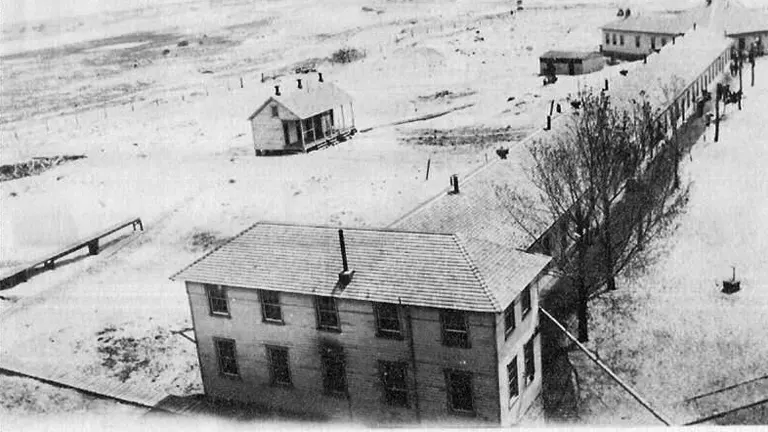
Transitioning into the 20th century, Cape Henlopen’s role in national defense became even more pronounced. With the advent of World War II, the cape was transformed into a critical component of the nation’s coastal defense system. Fort Miles, constructed within the park, played a significant role in guarding the Delaware Bay against potential enemy invasions. The fort, along with its artillery batteries and observation towers, formed a formidable defense network. These structures, many of which remain today, offer a tangible connection to the past and serve as poignant reminders of the park’s contribution to America’s wartime efforts. Following the war, in 1964, the area was repurposed as a state park, transitioning from its military legacy to a bastion of natural preservation and public recreation, thereby beginning a new chapter in its storied history.
Unique Ecosystem of Cape Henlopen State Park
Cape Henlopen State Park’s ecosystem is a remarkable tapestry of coastal environments, uniquely blending maritime forests, dynamic dunes, and wetland areas. This diverse landscape nurtures a wide range of flora and fauna, creating a haven for both endemic and migratory species. The park’s coastal dunes, some of the most dynamic in the region, serve as critical barriers against storms and provide habitats for specialized dune vegetation. The maritime forests, characterized by hardy pine and hardwood species, offer a rich canopy for birdlife and other wildlife.
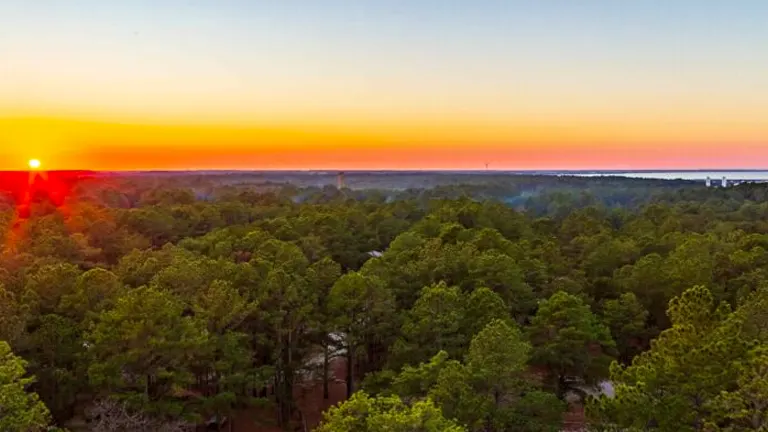
Additionally, the park’s wetlands, essential for water filtration and providing a breeding ground for amphibians and a variety of bird species, contribute to the overall ecological balance and biodiversity of the area. This unique confluence of ecosystems not only makes Cape Henlopen a key area for conservation efforts but also a living laboratory for environmental study and appreciation.
Location of Cape Henlopen State Park
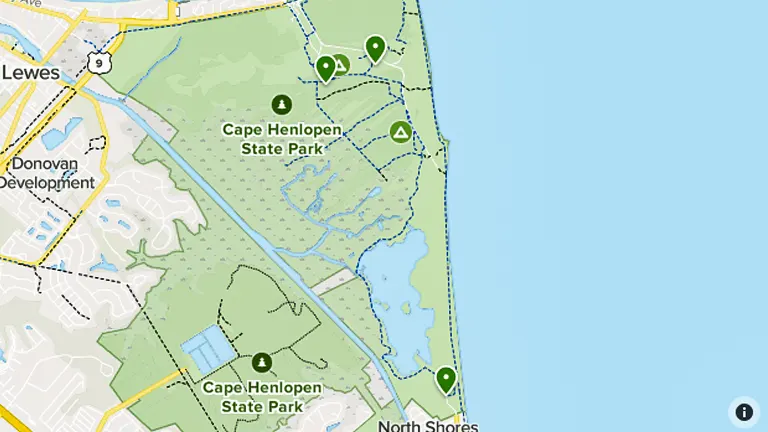
Cape Henlopen State Park is located at the point where the Delaware Bay meets the Atlantic Ocean in Sussex County, Delaware. This unique location offers a mix of tranquil bay waters and the vast Atlantic, making it a popular spot for beachgoers, birdwatchers, and nature enthusiasts. Its easy access from major East Coast cities adds to its appeal as a diverse and scenic destination.
Here’s a list of guides on how to reach Indiana Dunes State Park:
1. By Car:
- From the North (e.g., Philadelphia, New York): Take I-95 South to DE-1 South. Follow DE-1 South directly to the park entrance.
- From the South (e.g., Baltimore, Washington D.C.): Take US-50 East to US-13 North, then merge onto DE-1 South towards Lewes.
2. Public Transportation:
- There are limited public transportation options directly to the park. However, visitors can take buses to nearby towns like Lewes and then take a taxi or rideshare service to the park.
3. By Ferry:
- The Cape May-Lewes Ferry connects Cape May, New Jersey, with Lewes, Delaware. From the Lewes ferry terminal, the park is just a short drive or taxi ride away.
4. Biking:
- For those nearby or looking for an active trip, biking to the park is a great option. The area offers several bike-friendly roads and trails.
5. Air Travel:
- The nearest major airports are in Philadelphia and Baltimore. From there, renting a car or using a combination of public transportation and taxi services is advisable.
- Remember, travel times and routes can vary, so it’s always a good idea to check current conditions and plan your trip accordingly.
The Importance of Conservation and Recreation in Cape Henlopen State Park
The intertwining of conservation and recreation at Cape Henlopen State Park represents a crucial aspect of its management and appeal. The park’s diverse ecosystems, ranging from delicate dune systems to rich maritime forests and wetlands, necessitate vigilant conservation efforts to protect and sustain the native flora and fauna, including several endangered species. These conservation measures not only ensure the ecological integrity of the park but also enhance the recreational experience for visitors.
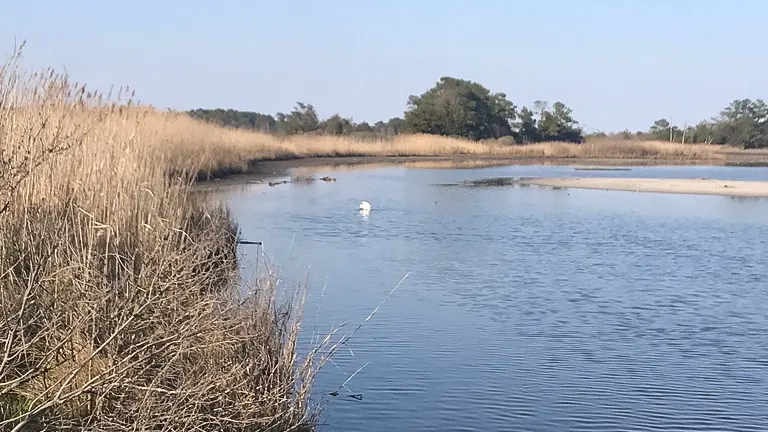
By maintaining its natural landscapes, the park offers a myriad of recreational activities such as hiking, bird watching, and beach-related pursuits in an environmentally responsible manner. This synergy between conservation and recreation underscores the park’s commitment to preserving its natural beauty for future generations while providing a serene and educational environment for today’s visitors. This dual focus not only enriches the visitor experience but also serves as a model for sustainable park management.
Diverse Vegetation and Plant Species in Cape Henlopen State Park
- American Beachgrass (Ammophila breviligulata): This hardy grass is pivotal in stabilizing the park’s sand dunes. Its deep root system helps prevent erosion and provides the foundation for dune formation.
- Eastern Red Cedar (Juniperus virginiana): A resilient evergreen, the Eastern Red Cedar thrives in the park’s sandy soil. It’s crucial for providing shelter and nesting sites for local wildlife.
- Sea Lavender (Limonium carolinianum): Flourishing in the salty marsh areas, Sea Lavender adds a subtle splash of color to the park’s landscape. This salt-tolerant plant is essential for maintaining the health of coastal marsh ecosystems.
- Pitch Pine (Pinus rigida): Adaptable to various environments, Pitch Pine contributes to the park’s maritime forests. Its presence is indicative of the region’s unique coastal forest ecosystem.
- Beach Plum (Prunus maritima): Found along the dunes and coastal areas, Beach Plum produces small, edible fruits. These shrubs play a significant role in dune stabilization and provide food for local wildlife.
- Black Cherry (Prunus serotina): Common in the park’s upland areas, Black Cherry trees are vital for their fruit, which serves as food for numerous bird species, and their wood, which supports various insect species.
- Saltmeadow Cordgrass (Spartina patens): Dominating the high marsh areas, this grass is essential for its role in building and stabilizing salt marshes, providing habitat and protection for many estuarine species.
- American Holly (Ilex opaca): As Delaware’s state tree, American Holly is notable for its bright red berries and glossy green leaves. It adds to the park’s biodiversity and offers a valuable food source for birds in winter.
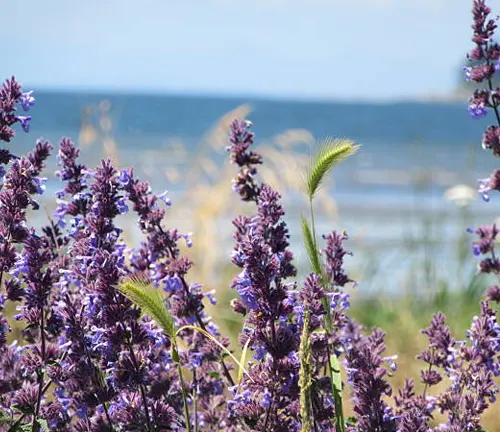

Fauna in Cape Henlopen State Park
- Piping Plover (Charadrius melodus): A small, endangered shorebird, the Piping Plover nests on the park’s sandy beaches. Conservation efforts in the park are crucial for protecting this sensitive species during its breeding season.
- Red Fox (Vulpes vulpes): Commonly seen in the park, the Red Fox is known for its adaptability and plays an important role in the ecosystem as both predator and scavenger.
- Osprey (Pandion haliaetus): Often spotted fishing along the park’s waterways, the Osprey, or “fish hawk,” is a symbol of the area’s rich aquatic life and healthy ecosystems.
- White-Tailed Deer (Odocoileus virginianus): Frequently observed in wooded areas and meadows, White-Tailed Deer are a vital part of the park’s ecosystem, influencing vegetation dynamics through their grazing habits.
- Eastern Box Turtle (Terrapene carolina carolina): A terrestrial turtle often found in the park’s forests and grasslands. This species is notable for its distinctive, domed shell and is an important indicator of ecological health.
- Horseshoe Crab (Limulus polyphemus): These ancient mariners, more closely related to spiders than crabs, are crucial for ecological balance. The Delaware Bay area, including Cape Henlopen, is famous for its large Horseshoe Crab populations, especially during their spawning season.
- Monarch Butterfly (Danaus plexippus): The park serves as a vital stopover for these migratory butterflies, especially in the fall. Their presence highlights the importance of the park’s habitat in supporting migratory species.
- Bald Eagle (Haliaeetus leucocephalus): America’s national bird, the Bald Eagle, can occasionally be seen soaring above the park, symbolizing the success of conservation efforts, given their once-endangered status.

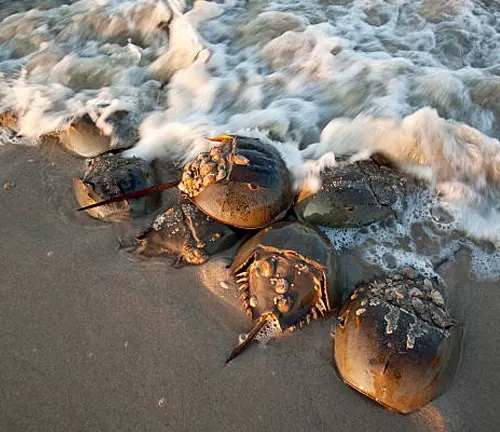
Different Attractions in Cape Henlopen State Park
World War II Observation Towers: These historic towers, remnants of the park’s military past, offer a unique glimpse into World War II history. Visitors can explore the towers and gain a panoramic view of the surrounding landscape. They serve as a powerful reminder of the park’s strategic importance in coastal defense and are a must-visit for history enthusiasts.
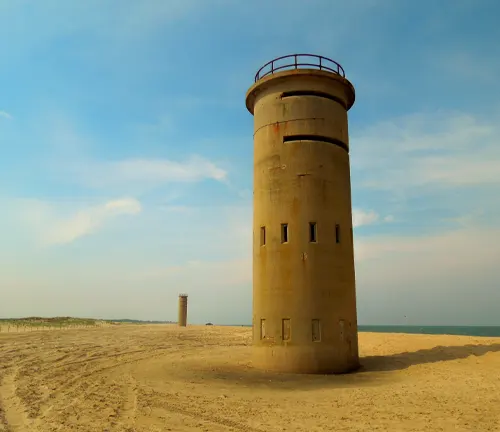
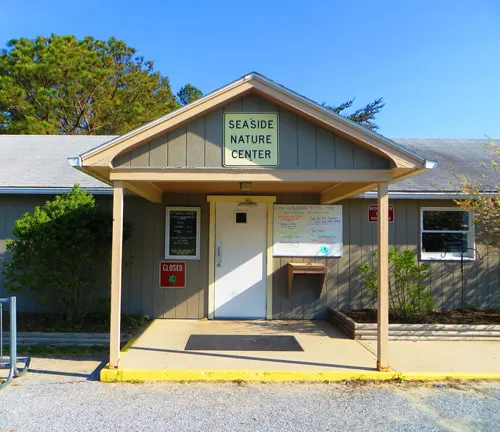
The Seaside Nature Center: The Seaside Nature Center is a gateway to understanding the park’s diverse ecosystems. It offers educational exhibits, interactive displays, and programs about local wildlife and habitats. Ideal for families and anyone keen to learn about the natural world, the center also serves as a starting point for guided tours and nature walks.
The Great Dune: Standing as the highest sand dune on the Atlantic coast of Delaware, The Great Dune offers breathtaking views and is a testament to the park’s dynamic coastal environment. This natural feature is not only a favorite spot for sightseers but also plays a crucial role in protecting inland areas from storms.


Fort Miles Historical Area: Fort Miles, located within the park, is a significant historical site that played a key role in America’s coastal defense during World War II. Today, it houses a museum and offers guided tours that delve into its history, complete with artillery displays and barracks that have been preserved and restored.
Biking and Hiking Trails: The park features an extensive network of trails catering to hikers and bikers of all levels. Trails like the Junction & Breakwater Trail and the Gordons Pond Trail offer scenic routes through diverse habitats, perfect for experiencing the park’s natural beauty and wildlife.
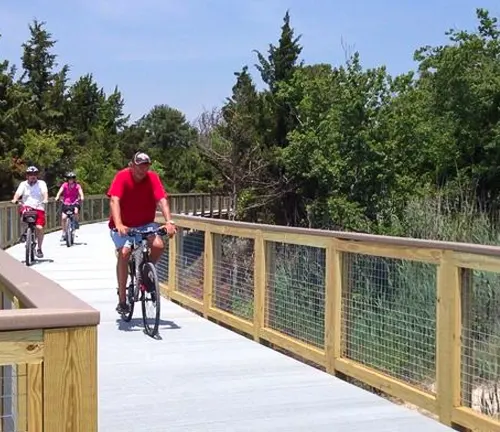

Fishing Pier and Beaches: The park’s fishing pier extends into the Delaware Bay and is a popular spot for anglers. Additionally, the park’s pristine beaches provide the perfect setting for swimming, sunbathing, and beachcombing, making them a favorite for families and beach enthusiasts.
Borrow-A-Bike Program: This unique program allows visitors to borrow bicycles for free to explore the park. It’s an eco-friendly and health-conscious way to enjoy the scenic beauty of Cape Henlopen, making the park accessible in a fun and sustainable manner.
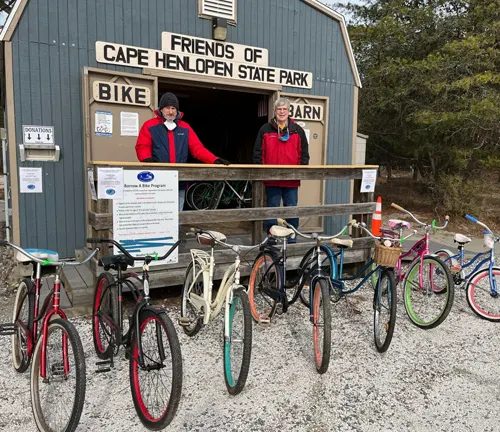
Recreational Activities in Cape Henlopen State Park
- Beach Activities: Cape Henlopen’s beaches are ideal for a variety of seaside activities, from swimming in the gentle waves to sunbathing on the sandy shores. The clean, well-maintained beaches offer a relaxing environment for families and solo travelers alike, providing a perfect backdrop for building sandcastles, playing beach games, or simply soaking up the sun.
- Biking: With its flat terrain and scenic routes, Cape Henlopen is a haven for bikers. The park’s trails, including the paved Junction & Breakwater Trail, offer a safe and enjoyable biking experience, winding through forests, fields, and coastal marshes. The park’s Borrow-A-Bike program encourages visitors to explore on two wheels, making it accessible and environmentally friendly.
- Fishing: Anglers find the park’s fishing pier and shoreline spots ideal for catching a variety of fish. Whether it’s surf fishing on the beach or casting a line from the pier, fishing enthusiasts enjoy the abundance of marine life in the park’s waters. The park also hosts occasional fishing tournaments and educational programs for beginners.
- Bird Watching: The park’s location along the Atlantic Flyway makes it a prime spot for birdwatching, especially during migration seasons. Enthusiasts can spot a diverse array of bird species, from shorebirds to raptors, in the park’s habitats, making it a rewarding experience for both novice and experienced birders.
- Picnicking: Scenic picnic areas scattered throughout the park provide perfect spots for family gatherings or a peaceful meal in nature. These areas, equipped with tables and grills, are conveniently located near beaches and trails, allowing visitors to combine dining with other park activities.
- Disc Golf: The park features a disc golf course, providing a fun and challenging experience for players of all skill levels. Set in a beautiful natural landscape, this activity combines physical exercise with the enjoyment of the outdoors, making it a popular choice for groups and families.
- Nature and History Programs: The park offers a variety of educational programs that focus on its natural and historical aspects. These programs, ranging from guided nature walks to historical tours, provide insightful and engaging experiences, deepening visitors’ appreciation of the park’s unique attributes.
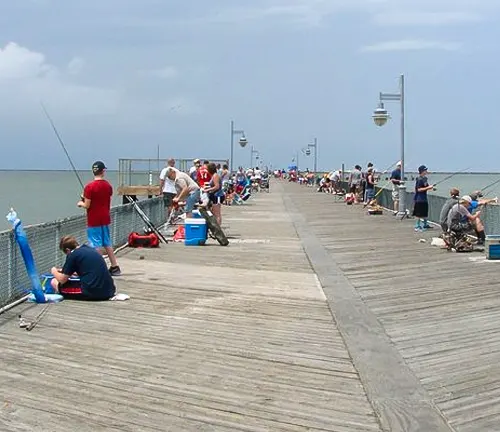
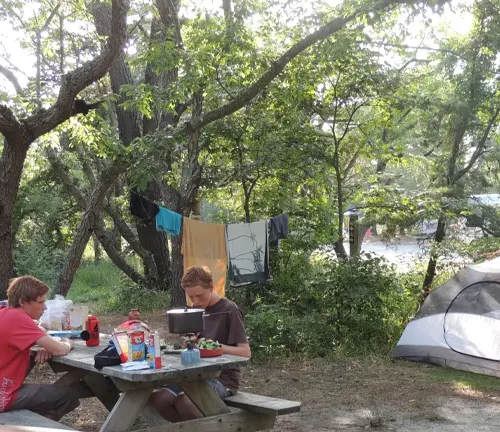
Different Facilities and Amenities in Cape Henlopen State Park
- Campgrounds: The park offers well-maintained campgrounds, perfect for those looking to immerse themselves in nature. With options ranging from tent sites to RV hookups, the campgrounds cater to various camping styles. Amenities like shower and restroom facilities ensure a comfortable experience, while the natural surroundings provide a serene backdrop for campers.
- Picnic Areas: Scattered throughout the park, picnic areas offer a relaxing way to enjoy a meal outdoors. These areas are equipped with tables and, in some cases, grills, making them ideal for family outings or group gatherings. Strategically located near beaches and trails, they provide a convenient spot to rest and refuel during a day of exploring.
- Beach Wheelchairs: Committed to accessibility, the park provides beach wheelchairs at no cost, ensuring that everyone can enjoy the sandy shores. These specially designed wheelchairs make it easier for visitors with mobility challenges to navigate the beach and experience the waterfront.
- The Seaside Nature Center: The Nature Center is an educational hub offering interactive displays and information about the park’s ecosystems and wildlife. It’s a great starting point for visitors to learn about the area and plan their exploration, with park staff available to provide guidance and answer questions.
- Fishing Pier: The fishing pier extends into the Delaware Bay and is a popular spot for anglers of all skill levels. Equipped with fish cleaning stations and benches, it’s a well-prepared facility for fishing enthusiasts looking to catch local species or simply enjoy the views.
- Observation Towers: The historic World War II observation towers located in the park are not only significant landmarks but also provide unique vantage points for panoramic views. While some towers are open to the public, others serve as intriguing historical sites that add to the park’s allure.
- Biking Trails and Borrow-A-Bike Program: With numerous biking trails, the park is a haven for cyclists. The Borrow-A-Bike program further enhances this experience by offering free bike rentals, allowing visitors to explore the park’s beauty on two wheels.
- Playgrounds: The playgrounds in the park are a delight for younger visitors. These safe, well-equipped areas provide a fun and engaging space for children to play, ensuring a family-friendly experience for all park guests.
Tips and Advice for Visiting Cape Henlopen State Park
- Check Park Hours and Seasonal Schedules: Before visiting, it’s important to check the park’s operating hours and any seasonal schedules, as some facilities or areas might have limited access depending on the time of year. This ensures that you can plan your visit to take full advantage of what the park has to offer.
- Respect Wildlife and Natural Areas: While exploring the park, always maintain a respectful distance from wildlife and adhere to designated trails to protect both yourself and the natural environment. Remember that feeding animals is prohibited, as it can harm their health and alter natural behaviors.
- Be Prepared for the Weather: Weather at Cape Henlopen can be variable, so dress in layers and bring appropriate gear, including sun protection, rainwear, and comfortable walking shoes. This preparation is key to enjoying your visit regardless of changing weather conditions.
- Familiarize Yourself with Park Rules: Familiarize yourself with park rules, especially those regarding campfires, alcohol consumption, and pet policies. Adhering to these rules ensures a safe and enjoyable experience for all visitors.
- Plan for Beach Visits: If you’re planning to spend time on the beach, arrive early to find the best spot, especially during peak season. Bring beach essentials like sunscreen, hats, and sufficient water to stay hydrated.
- Take Advantage of Educational Programs: The park offers various educational programs and guided tours that can enrich your visit. Participating in these programs is a great way to learn about the park’s history, wildlife, and ecosystems.
- Practice Leave No Trace Principles: Always practice Leave No Trace principles by disposing of waste properly, staying on trails, and leaving natural and historical objects undisturbed. This helps in preserving the park’s beauty and ecological integrity for future visitors.
- Plan Activities According to Tides: If engaging in activities like fishing or exploring tidal pools, check the local tide schedules to plan your activities safely and effectively. Tidal conditions can greatly affect the accessibility and safety of certain park areas.
- Bring Necessary Supplies: While the park has facilities like restrooms and a nature center, it’s a good idea to bring essential supplies like water, snacks, a first aid kit, and a charged phone for emergencies.
Recommendation
Discover the wonders of Cape Henlopen State Park, a perfect blend of history, nature, and recreation. With its beautiful beaches, historic landmarks, and diverse wildlife, it’s an ideal destination for anyone looking to explore the outdoors. Whether you’re seeking adventure or relaxation, this park is a must-visit for a truly memorable experience. Don’t miss the chance to witness its unique charm!
Conclusion
In summary, Cape Henlopen State Park is a captivating blend of natural beauty and historical depth. It’s a place where scenic landscapes, rich wildlife, and poignant history converge, offering something for everyone. Whether seeking adventure, relaxation, or a journey through the past, this park delivers an unforgettable experience. Cape Henlopen is not just a destination, but a treasure of the Delaware coast, promising lasting memories for all who visit.
FAQs
- What are the park’s operating hours?
Cape Henlopen State Park is open daily from sunrise to sunset. Specific facilities like the Nature Center may have different operating hours, so it’s advisable to check in advance. - Is there an entrance fee for the park?
Yes, there’s a daily entrance fee for vehicles. Rates vary for in-state and out-of-state visitors, with annual passes also available for frequent visitors. - Can I bring my dog to Cape Henlopen State Park?
Yes, dogs are welcome in most areas of the park but must be kept on a leash at all times. There are certain restrictions during the summer months on beaches due to nesting birds. - Are there camping facilities available?
Yes, the park offers camping facilities, including tent sites and RV hookups, with amenities like shower and restroom facilities. It’s recommended to book in advance, especially during peak season. - What kind of wildlife might I see in the park?
Visitors can see a range of wildlife, including white-tailed deer, red foxes, and various bird species, especially during migration seasons. The park is also a habitat for the endangered Piping Plover. - Are there guided tours available in the park?
Yes, Cape Henlopen State Park offers guided tours, particularly focusing on its rich history and diverse ecosystems. These include tours of the WWII observation towers and Fort Miles. - Can I fish in the park, and do I need a license?
Fishing is permitted in designated areas. A Delaware fishing license is required for fishing, and regulations must be followed. - Are there any restrictions on beach activities?
Activities like swimming are only allowed in designated areas. For the protection of wildlife, certain areas of the beach may be restricted during nesting seasons. It’s always best to follow posted signs and park rules.
Cape Henlopen State Park is a true gem, offering a unique blend of history, natural beauty, and recreational activities. Whether for a day trip or an extended stay, this park promises memorable experiences for all who visit. Embrace the adventure and discover the wonders of Cape Henlopen!


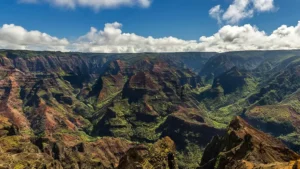


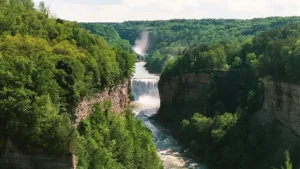
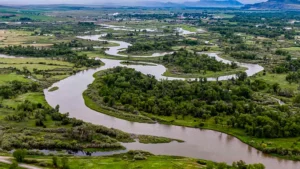
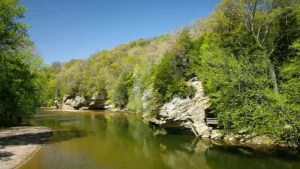
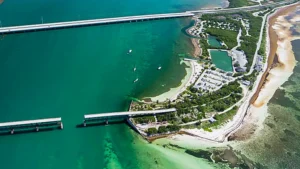

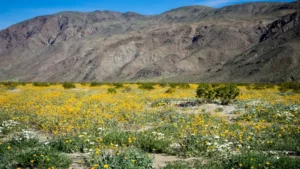

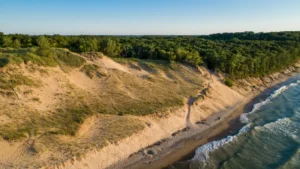
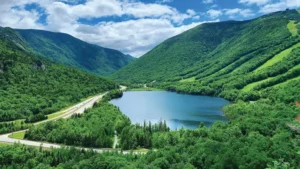
Leave your comment